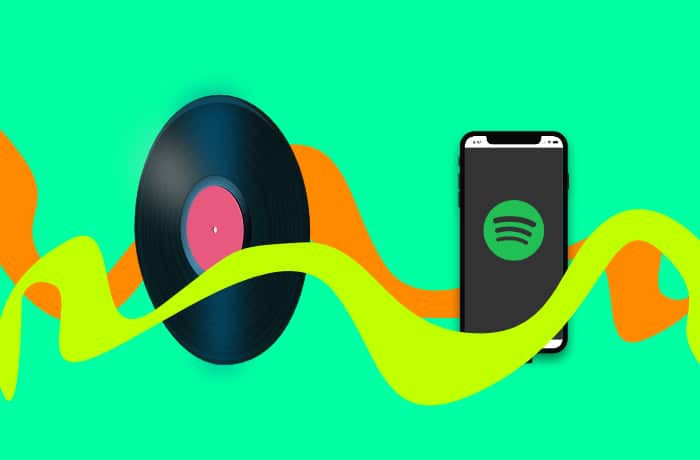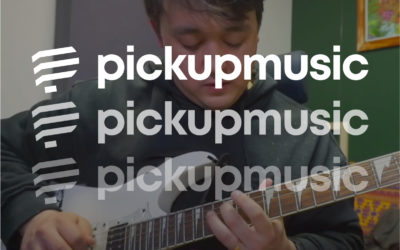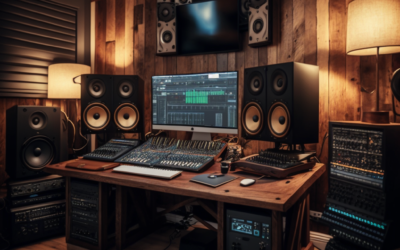You have probably seen some of the major artists these days dropping EPs. This has been a trend the past decade, but what brought the EP back from the dead, or did the EP ever disappear?
What is an EP in Music? The term EP comes from the vinyl days and means “Extended Play”. The modern meaning is a bit different. The average EP has about 4 songs, but can have up to 7 songs. It is a great way for musicians to build a fanbase without the burden of creating and releasing a full album of music.
Releasing an EP has started to become a major factor in the discography of indie musicians and even major artists. It can be a stepping stone from a series of singles to an album or a way to invest in expanding your creativity. Let’s get into what exactly an EP is and how you can use it in your release cycle.
Everything You Need To Know About an EP
History
The terms EP and LP come from the days when vinyl reigned supreme in the music industry, and the terms have stuck around.
Originally, the EP was the name given to the 7-inch “Extended Play” 45 vinyl record created by RCA in 1952. However, this vinyl format lost out in the battle of technologies to the LP, a 12-inch 33 1/3 RPM vinyl record created by Columbia.
So like so many other technologies that have lost the format battle doomed to be forgotten, that is until it was picked up by 80’s punk, rock, and other bands as their format of choice to get their music heard by fans and pitch to record labels.
In the late 2000s when digital was beginning to take off, the EP began to have another resurgence, but not in the form of vinyl. The EP became to be a stepping stone for artists to release something more substantial than a single and have a more consistent release timeline.
How Many Songs Are On An EP?
When EPs were limited by the format of vinyl, it was easy to nail down exactly what an EP was. Now, each organization and music streaming platform have their own qualification for what an EP is or is not. Some organizations such as The Recording Academy do not even recognize an EP in its award categories.
What Qualifies As an EP on The Digital Platforms
Since the EP is no longer a physical medium limited by the technology of vinyl. The definition of what actually an EP is can be difficult. Part of this problem is that each of the digital platforms has their own qualification as to what an EP is — or then don’t even recognize the format.
Here are how some of the digital platforms identify an EP.
APPLE MUSIC
A release will be identified as an EP if it has one of the following:
- It has one to three songs with one song at least 10 minutes in length and a total time of 30 minutes or less.
- 4 to 6 songs with a total run time of 30 minutes or less.
It is important to note that iTunes will automatically add “- EP” to the end of your title.
SPOTIFY
A release will be identified as an EP if it meets ALL of the following criteria:
- The total play-time of the release is less than 30 minutes.
- There are 4 ~ 6 tracks on the release.
What is the difference between an EP, LP, and Single?
All of these terms relate back to the analog days when people still used vinyl, but some of the meanings have morphed. Let’s go over the origins and then discuss what they mean now.
A Single was a vinyl record that only held one song on each side, an A-side and B-side. The A-side would typically have the “hit” song, and the B-side would have another recording off of the album or an alternative version.
Now, a single is generally considered to be a single song that is being released prior to the album to generate some exposure. This is usually the that is considered the “hit” song from the album.
On the streaming services, a single is actually considered a release that has three (3) or fewer tracks. On Apple Music, they will add a “- Single” to the end of your title. Also in general, Singles do not have a separate name for the collection of songs. On the other hand, an EP, will have a unique name for the collection of songs.
The meaning of an LP has not changed since it’s inception. It still means the original vinyl “Long Playing” record. So, if you ever hear of someone talking about an LP, it will generally be the 12″ vinyl record that you so often see.
Is an EP eligible For the Record Charts?
Yes, it is eligible to get on the record charts as certain songs off the EP may become a hit on the billboard charts. However, there are some limitations for it to get on the album charts and even grammy consideration.
The RIAA, consider an EP as having 3-5 songs and is under 30 minutes. So if you meet these considerations your EP could definitely go gold or get on the billboard charts.
Can a EP be considered for a Grammy?
While The Recording Academy’s rules do not include mention of a category for an EP, they consider an album any release that has 5 or more songs and has a running time of more than 15 minutes. This isn’t exactly in line with what most streaming services consider an EP, which is at least 4 songs. It is a little stricter in the track count, but an EP can definitely be considered for a Grammy.
One of the first records considered for a Grammy was Alice In Chain’s EP, Jar of Flies. Also, in more recent times, Lil Naz X’s debut EP, 7, was given a nomination for Album of the Year.
What Is The Purpose of an EP?
The main purpose of an EP hasn’t changed that much over the years. If you take a look at many of the modern artists release timeline. You will see many artists start off by releasing a series of EP’s before releasing a full-length album. This is a great way to start for emerging artists.
Here are a few reasons as to why you should release an EP.
1. Introduce Yourself To New Fans
With an EP, listeners can get a sense of who you are as an artist. You can’t really get that feeling or intimacy with a single. A listener needs to get a sense of who you are as a person or artist before they start taking the journey to become your fan. An EP helps you accomplish this.
A common strategy for new artists is to release a single, and then within the next few months, release an EP. The new listeners you gained from the single will follow along with the momentum and listen through to the EP – that is the hope at least.
2. Faster Feedback Cycle
No matter what you are learning having a faster feedback cycle and help you develop your skills. This is especially true for emerging artists that are still finding their voice, brand, or niche. Being able to release a multitude of smaller collections of songs has the benefit of letting you learn from each release and adapt.
For example, you release a series of 3 EP’s over the year. From each of those releases, you have gained a better understanding of who your fans are and you have developed your sound because you have gotten feedback from and learned something through those releases.
Now, on the other hand. You take a full year to have the money, time, and creative output to put together a full-length album. You will only be able to get feedback on that singular release which will not amount to how much you would learn from multiple releases. Now for more established artists, this probably doesn’t hold as much weight, but for emerging or mid-level artists, the feedback cycle is very valuable for self-development.
Here Chris Graham discusses the benefits of releasing music more frequently and why ALBUMS ARE DEAD…
3. Fill in the gap between full-length albums
Creating enough material for a full-length album takes a lot of time and creative power. So it is not something you should rush.
But your fans are wanting more from you! They are waiting to hear new music from you? What should you do?
You should release an EP. An EP is less of a time and money investment and can easily keep your fans satisfied. It wouldn’t even have to be newly created material. It is very common for musicians to release an EP of previously unreleased material that did not make it on a prior album.
Tips on Releasing Your EP
- Know the purpose of the EP and choose one – Is it to make money? Grow your Fanbase? Pure Creative Outlet?
- Set a Target. Depending on your purpose, create a goal or target that you want to reach. Want to grow your fanbase? Then set a target of gaining 1,00 new listeners on Spotify. Then work towards that specific target.
- Put EP in the title. Some of the streaming services will add it automatically and others will not. Let’s keep the naming conventions streamlined.
- Have a promotion plan already in place before the release.
Damian Keyes has a great series about how to release an EP that I would recommend you checkout.
Conclusion
The EP has long been the tool new artists use to promote their music since it is one of the most cost-effective ways to create a body of work that will allow listeners to understand who you are as an artist.
The EP is the independent artist’s best friend and I recommend anyone just starting their career as a musician to release an EP before considering putting together a full-length album.
Let me know what you think of what role an EP plays for the modern independent musician.





0 Comments